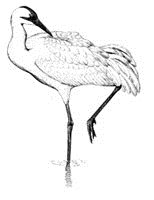North American Crane Working Group

Proceedings of the North American Crane Workshop
Date of this Version
2023
Document Type
Article
Citation
Proceedings of the North American Crane Workshop (2023) 16: 69–80
Abstract
Evaluating site use and fidelity is vital to understanding roosting area needs for individual birds. We used data from wintering Aransas-Wood Buffalo population whooping cranes tracked with Platform Transmitting Terminals to identify roost sites in Texas. We analyzed 86 unique winters across 42 individuals and used a hierarchical clustering approach to group roost locations that were within 100 m of each other to identify unique roost sites by individual (n = 2,608). We found that on average, whooping cranes used 30.3 ± 1.71 SE roost sites per winter (range 8–70; 30 September and 2 May) and spent on average 4.4 ± 0.18 nights (median = 1, range 1-109) total at each site through the winter. In addition, roost sites consisted of 2.8 ± 0.07 (median = 1, range 1–33) distinct roost periods on average throughout the winter, indicating revisitation of sites throughout the season. Area of roost sites overlapped with 22.4 ± 0.02% (range 0.0-64.5) of the area visited in a previous year. Subadult whooping cranes were found to use more roost sites in a winter (40.5 ± 2.73) than adults without juveniles (23.0 ± 3.80) and family groups (27.55 ± 2.60). Subadults also spent fewer nights total at roost sites (3.53 ± 0.22) and revisited roost sites less often (2.39 ± 0.10). For nights with at least 2 locational data points (n = 5,227), whooping cranes used more than 1 roost site 6% of the nights (n = 293). Reliance on multiple sites throughout the winter suggests that a network of roost sites for whooping cranes is important. Future research should identify characteristics of primary roost sites and investigate the drivers behind their use within and across winters.


Comments
Copyright 2025, North American Crane Working Group. Used by permission